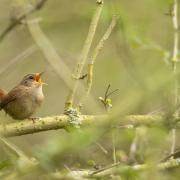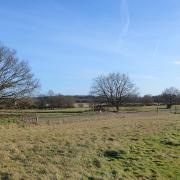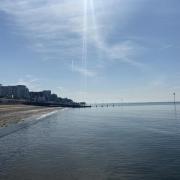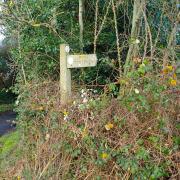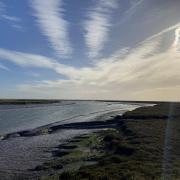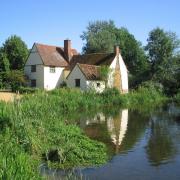Meet the county’s beach-nesting birds and learn how to protect them
Contrary to some beliefs, not all birds make their nests in trees high above ground. Some birds, such as dunnocks, will nest deep in a thorny hedgerow. Others, like blue tits and owls, will nest in tree holes. For some birds, sheltered, sandy and shingled beaches that are just high enough to escape the tide are the perfect conditions for building a nest.
Dotted along the Blackwater and Colne estuaries, our nature reserves provide the ideal home for Essex’s most-threatened beach-nesting birds. Birds like little terns, the brightly beaked oystercatcher and ringed plover will use the Essex coast to nest and raise their chicks.

Get to know Essex’s beach-nesting birds
Little tern
Have you heard of the little tern? The UK’s smallest tern has a short tail and a distinct yellow bill with a black tip. Spending the warmer winters in West Africa, this short and squat sea bird migrates thousands of miles to Essex to nest on its coastline from April to August.
Ringed plover
Ringed plover lay their eggs on the beach from late March. These small, short-legged waders are well-camouflaged to feed on insects and crustaceans along beaches and mudflats. In the presence of predators, these birds can pretend to be injured to deter threats away from their nest.
Oystercatcher
Oystercatchers have a distinctive orange beak, a red ring around their eyes and smart black and white plumage. They are fiercely territorial and can be heard hassling other birds on the beach. Their diet includes cockles, mussels and worms.

Sadly, beach-nesting birds are under threat due to human disturbance and coastal changes caused by climate change, such as storm surges and rising sea levels. Human pressures and disturbance on key nesting sites can end up being the determining factor as to whether these birds successfully battle through tough conditions and raise fledglings.
To protect these threatened species, Essex Wildlife Trust works in collaboration with RSPB, the Essex Police Marine Unit and Bird Aware Essex in a united project called Share our Shores to raise awareness of beach-nesting birds’ presence.
Throughout spring and summer, areas of prime habitat are roped off and signage makes it clear where access is not permitted. These sites include Old Hall Marshes, Tollesbury Wick nature reserve and Colne Point nature reserve.
By creating the ideal habitat for these birds, monitoring the populations and working with the public to raise awareness, we can all help Essex’s coastal bird populations to thrive. Last year saw a very successful year for beach-nesting birds on Colne Point nature reserve, and we’re hopeful that year-on-year these measures will bring them back from the brink and to healthy population numbers on the Essex coast.
From March to August, if you go to the coast, remember to help beach-nesting birds with these simple steps:
1. Know where they are
By familiarising yourself with potential breeding locations you can help reduce disturbance to a nesting site and know to look out for their camouflaged nests.
2. Respect zoned-off areas
Areas with signage and rope are no-go zones from April to August as these sites are protected for wildlife.
3. Avoid disturbance by boat
Reduce disturbance on the water by only landing boats on designated moorings and landing areas, keep water sports away from the shoreline, respect speed limits and minimise noise near breeding sites.
4. Back away if you disturb a breeding species
Short, sharp alarm calls, birds with full beaks or coming unusually near to you usually means you are too close to their young or eggs, which can often be very well hidden. If you see any of this behaviour, you should back up the way you came to avoid any risk of disturbing or injuring young, being careful to watch where you tread.
5. Raise awareness
Help spread the word about the importance of our coastline for beach-nesting birds and how everyone can help these endangered species by following these key guidelines.

We've produced a number of leaflets and resources to help you spread the word. Download them from our website and share them within coastal communities, friends and family to raise awareness of how we can all help our coastal birds this summer, essexwt.org.uk/share-our-shores






